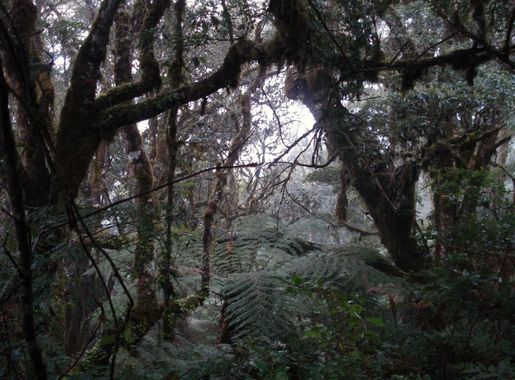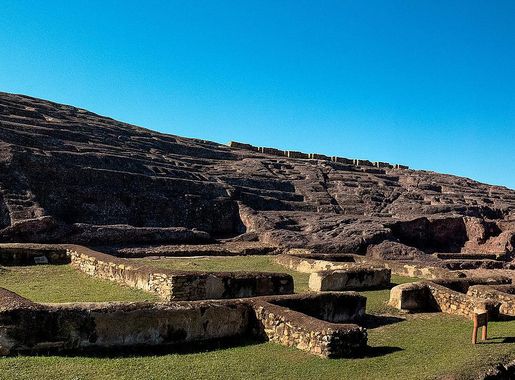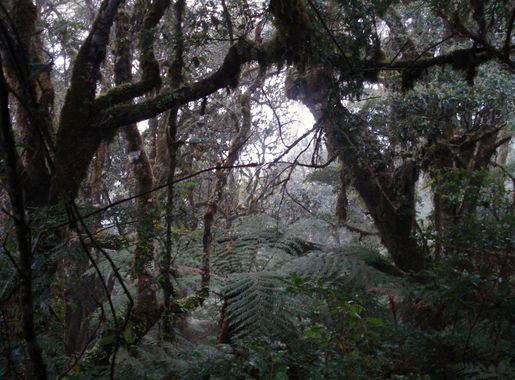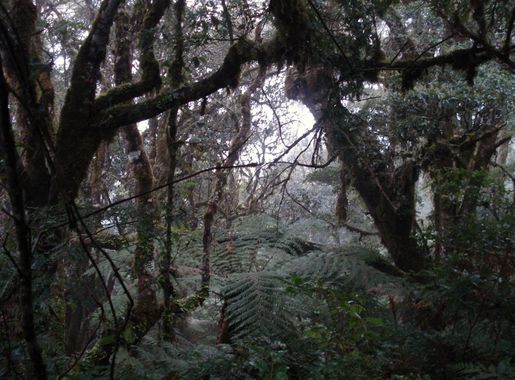
Amboró National Park: Bolivia's Hidden Wilderness
Discover Amboró National Park: A Biodiversity Hotspot with Rich Flora, Exotic Wildlife, and Adventurous Trails in Bolivia
Amboró National Park is a pristine and expansive natural reserve in Bolivia. Nestled between the Andes Mountains and the Amazon Basin, it offers a unique blend of tropical and temperate ecosystems. The park is home to over 800 species of birds, making it a paradise for bird watchers. You will also find an array of mammals, including jaguars, pumas, and spectacled bears. One of the park's main attractions is its diverse flora. With over 3,000 plant species, Amboró National Park is a botanical treasure. The park's cloud forests, lowland rainforests, and dry forests provide a varied landscape for exploration. The region's rich biodiversity is a result of its unique location at the confluence of different climatic zones. For adventure seekers, Amboró offers numerous hiking trails ranging from easy walks to challenging treks. Trails like the La Yunga and La Cascada routes take you through lush forests, past cascading waterfalls, and offer stunning views of the surrounding mountains. Guided tours are available and are highly recommended to get the most out of your visit. The park is also culturally significant, with indigenous communities living in and around the park. These communities offer a glimpse into traditional Bolivian life and often share their knowledge of the local flora and fauna with visitors. This makes a trip to Amboró not just a natural adventure, but a cultural one as well.
Local tips in Amboró National Park
- Hire a local guide to navigate the park's vast and often complex trail system.
- Visit during the dry season (May to October) for easier hiking conditions.
- Bring plenty of insect repellent to protect against mosquitoes and other insects.
- Wear sturdy, waterproof hiking boots as some trails can be muddy and slippery.
- Carry sufficient water and snacks, as facilities within the park are limited.
- Respect local wildlife and maintain a safe distance from animals.
- Learn a few phrases in Spanish or Quechua to communicate with local communities.
- Pack a good quality camera to capture the stunning scenery and diverse wildlife.
Amboró National Park: Bolivia's Hidden Wilderness
Amboró National Park is a pristine and expansive natural reserve in Bolivia. Nestled between the Andes Mountains and the Amazon Basin, it offers a unique blend of tropical and temperate ecosystems. The park is home to over 800 species of birds, making it a paradise for bird watchers. You will also find an array of mammals, including jaguars, pumas, and spectacled bears. One of the park's main attractions is its diverse flora. With over 3,000 plant species, Amboró National Park is a botanical treasure. The park's cloud forests, lowland rainforests, and dry forests provide a varied landscape for exploration. The region's rich biodiversity is a result of its unique location at the confluence of different climatic zones. For adventure seekers, Amboró offers numerous hiking trails ranging from easy walks to challenging treks. Trails like the La Yunga and La Cascada routes take you through lush forests, past cascading waterfalls, and offer stunning views of the surrounding mountains. Guided tours are available and are highly recommended to get the most out of your visit. The park is also culturally significant, with indigenous communities living in and around the park. These communities offer a glimpse into traditional Bolivian life and often share their knowledge of the local flora and fauna with visitors. This makes a trip to Amboró not just a natural adventure, but a cultural one as well.
When is the best time to go to Amboró National Park?
Iconic landmarks you can’t miss
Parque Nacional Amboró
Explore the breathtaking biodiversity and stunning landscapes of Parque Nacional Amboró, Bolivia's premier destination for nature lovers and adventure seekers.
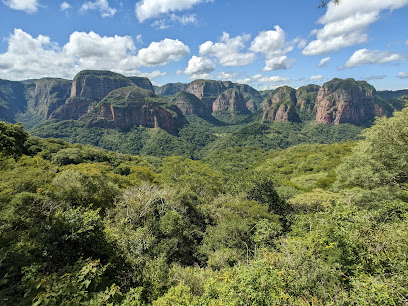
Mirador Del Amboró
Explore the breathtaking beauty and biodiversity of Mirador Del Amboró, a top ecological park in Bolivia for nature enthusiasts and adventurers.
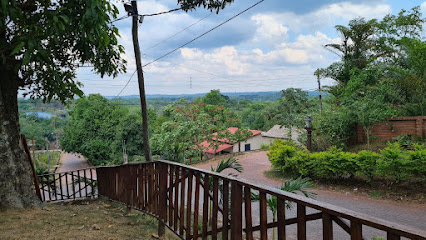
Unmissable attractions to see
Zoológico Municipal Noel Kempff Mercado
Explore the vibrant wildlife and breathtaking landscapes at Zoológico Municipal Noel Kempff Mercado in Santa Cruz, Bolivia.
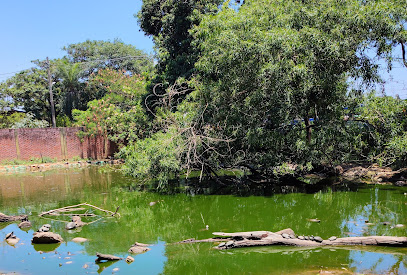
Christ the Redeemer Monument
Discover the iconic Christ the Redeemer Monument in Santa Cruz, a breathtaking sculpture offering stunning views and a glimpse into Bolivia's rich cultural heritage.
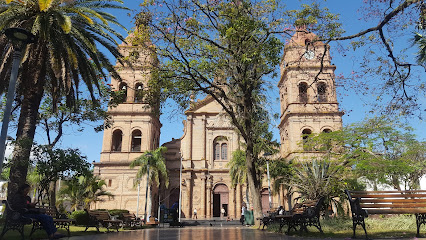
La Rinconada Ecoparque y Restaurante
Experience the harmony of nature and Bolivian cuisine at La Rinconada Ecoparque y Restaurante, a must-visit ecological park in Santa Cruz de la Sierra.
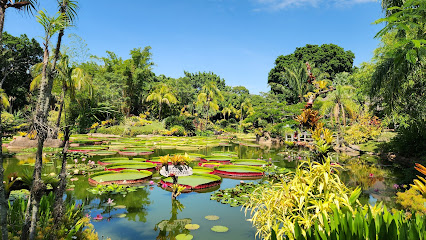
Los Mangales III Park
Explore the beauty of Los Mangales III Park, a lush urban escape in Santa Cruz de la Sierra, perfect for relaxation, picnics, and outdoor activities.
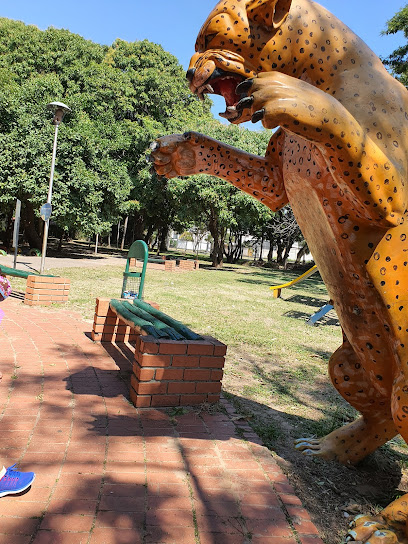
Laguna Capiguara
Explore Laguna Capiguara: A serene lagoon near Santa Cruz de la Sierra, perfect for nature lovers and outdoor enthusiasts seeking tranquility and adventure.
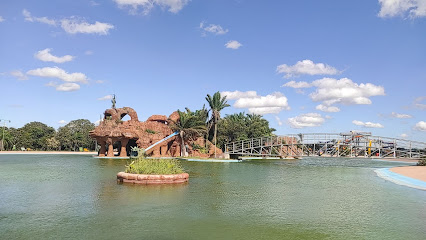
Samaipata Archaeological Museum (CIAS)
Explore the rich history of Bolivia at the Samaipata Archaeological Museum, home to captivating artifacts and insights into pre-Columbian cultures.
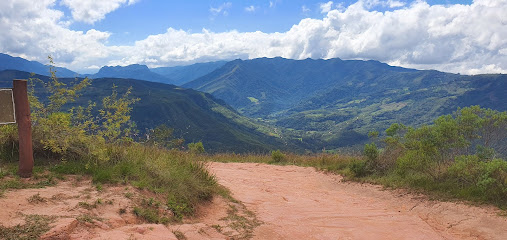
SAMAIPATA - EL FUERTE -
Explore the ancient wonders of Fort Samaipata, a UNESCO World Heritage Site in Bolivia, offering rich history and stunning Andean landscapes.
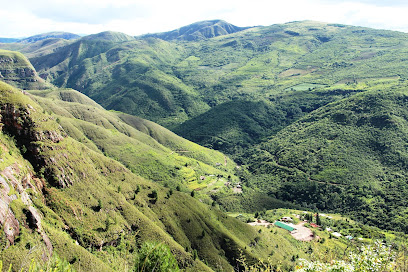
Espejillos
Explore the serene beauty of Espejillos, a hidden gem in Bolivia, perfect for nature lovers and adventure seekers alike.

Cataratas El Jardin De Las Delicias
Experience the breathtaking beauty of Cataratas El Jardin De Las Delicias, a hidden gem in El Torno, Bolivia, surrounded by lush nature and serene waterfalls.
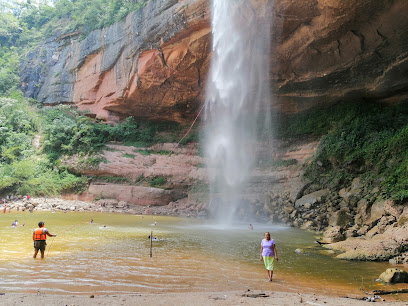
Plaza Principal de Terebinto
Explore the vibrant Plaza Principal de Terebinto, a cultural hub and museum showcasing the heart of Bolivian heritage and community spirit.
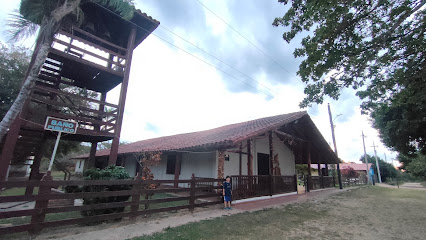
Urbano de Preservación Ecológica Curichi La Madre Park
Discover the serene beauty and rich biodiversity of Urbano de Preservación Ecológica Curichi La Madre Park in Santa Cruz de la Sierra, Bolivia.
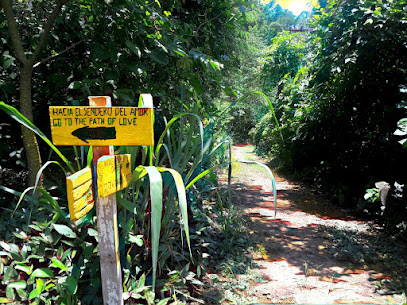
Bosque de Helechos Gigantes
Discover the majestic beauty of Bosque de Helechos Gigantes, a natural haven in Samaipata filled with towering ferns and rich biodiversity.

Codo de los Andes
Explore the breathtaking trails of Codo de los Andes in Samaipata, Bolivia, where adventure meets stunning natural beauty.
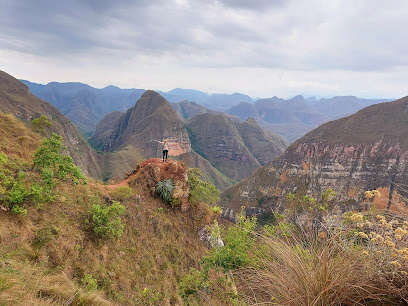
Tall Mirror
Explore the Tall Mirror in Jardin de las Delicias, a stunning tourist attraction blending art and nature for an unforgettable experience.
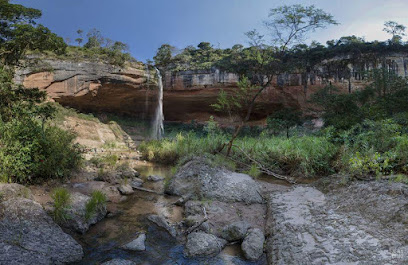
Mirador Bosque Helechos Gigantes
Explore the lush landscapes and towering ferns of Mirador Bosque Helechos Gigantes, a breathtaking natural wonder near Samaipata, Bolivia.

Essential places to dine
Restaurante El Arriero
Experience top-notch steaks at Restaurante El Arriero - where Bolivian barbecue meets culinary excellence.
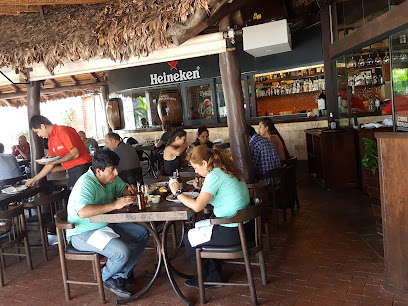
El Aljibe Comida Típica
Experience authentic South American cuisine at El Aljibe Comida Típica in Santa Cruz de la Sierra—where every dish tells a story.
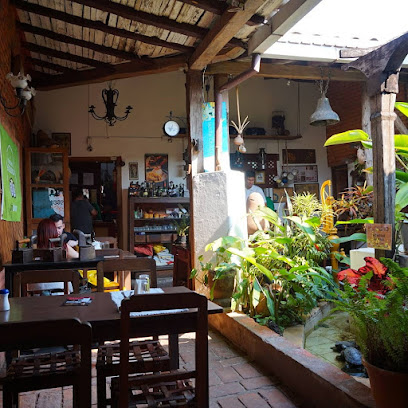
Jardín de Asia
Discover an exquisite fusion of Asian flavors at Jardín de Asia in Santa Cruz - a dining experience that delights every palate.
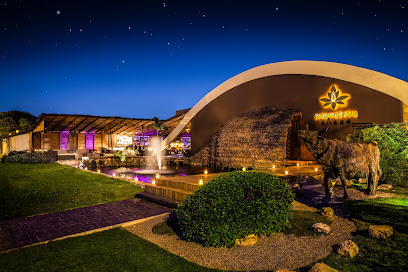
Parque Nacional Amboró
Explore Amboró National Park: A Biodiversity Haven in Bolivia's Lush Landscapes.
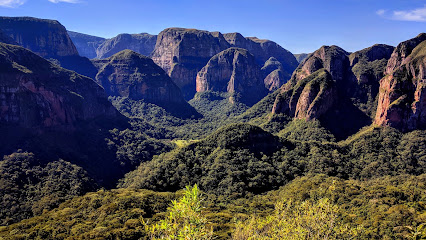
Sach'a Huaska
Experience exquisite Bolivian cuisine at Sach'a Huaska in Santa Cruz de la Sierra's vibrant Open Mall.
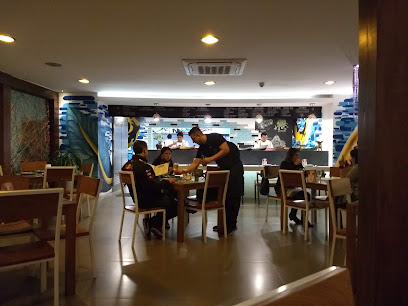
Inés España Bistro & Bakery
Discover the exquisite blend of traditional Bolivian cuisine and modern dining at Inés España Bistro & Bakery in Santa Cruz de la Sierra.
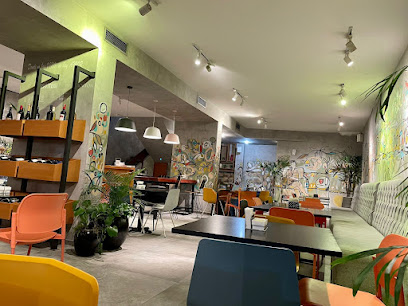
Mangarosa Brasserie
Experience the flavors of Bolivia at Mangarosa Brasserie—where every meal is crafted with passion in Santa Cruz de la Sierra.
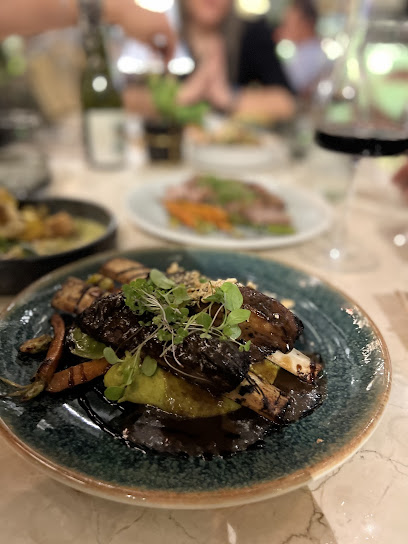
Tigre Morado Santa Cruz
Discover the essence of Peruvian cuisine at Tigre Morado Santa Cruz - where tradition meets taste in every delightful dish.
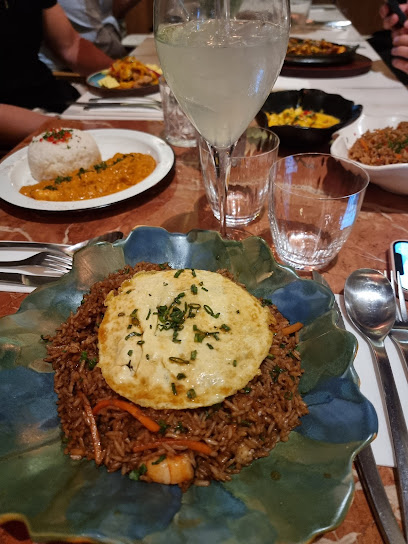
Kao by Sach'a
Discover exquisite Pan Asian flavors at Kao by Sach'a in Santa Cruz de la Sierra - where tradition meets modernity.
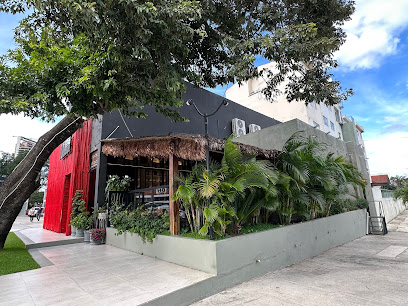
Restaurant Pizzeria Suma Uru Casera
Discover authentic Bolivian cuisine and delicious pizzas at Restaurant Pizzeria Suma Uru Casera on Isla del Sol - where flavor meets breathtaking views.
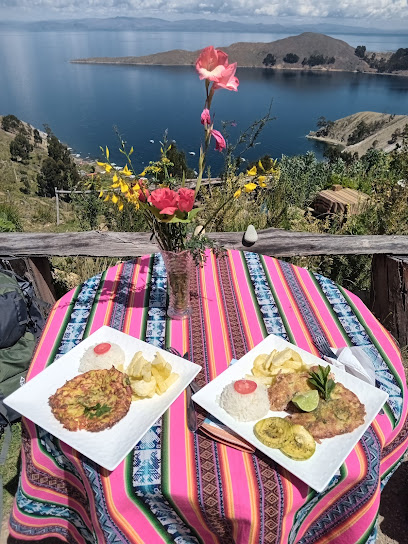
Cafe Amboro
Discover Café Amboro in Buenavista: A cozy cafe offering authentic Bolivian flavors amidst warm hospitality in Santa Cruz.

Horneau El Rincón Camba - Ruta Turística Chochís Mágico
Discover authentic Bolivian cuisine at Horneau El Rincón Camba in Chochís – where fresh ingredients meet traditional recipes.
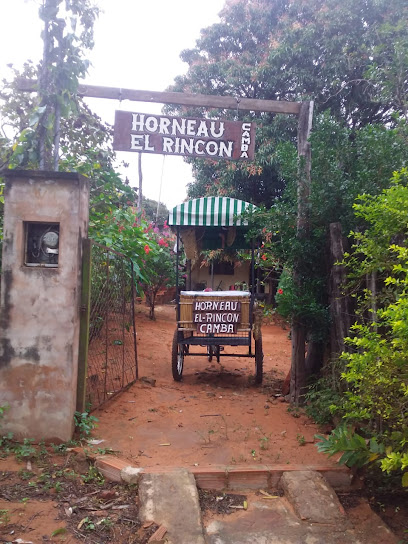
Restaurante ABIRO PAÑAÑI (BENI COME )
Experience the vibrant flavors of Bolivia at Restaurante ABIRO PAÑAÑI's exquisite buffet in Exaltacion.

Markets, malls and hidden boutiques
Parque Nacional Amboró
Discover the breathtaking biodiversity and stunning landscapes of Parque Nacional Amboró, a natural gem in Bolivia perfect for adventure seekers and nature lovers.
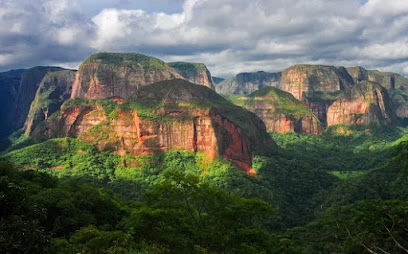
Icarus Kpop Anime
Discover a treasure trove of K-Pop and anime merchandise at Icarus Kpop Anime in Chané, where fandom comes to life in vibrant colors and unique collectibles.

Idi Multi Store
Discover the charm of Bolivian craftsmanship at Idi Multi Store, your go-to gift shop in Santa Cruz de la Sierra.

Imagine
Explore Imagine in Santa Cruz de la Sierra for unique Bolivian gifts and handcrafted treasures that capture the spirit of Bolivia.
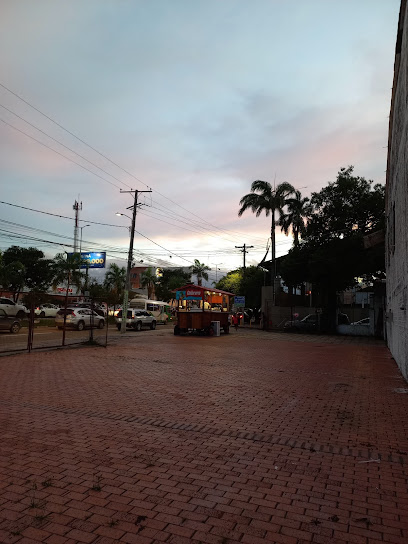
By Jordan's
Discover unique Bolivian gifts and handcrafted treasures at By Jordan's in Santa Cruz de la Sierra, perfect for souvenirs and keepsakes.

Parque Amboro
Discover Parque Amboro: Bolivia's hidden gem of biodiversity, where adventure meets tranquility amidst stunning natural landscapes.

WOOW STORE BOLIVIA
Explore Woow Store Bolivia for unique handcrafted gifts and souvenirs that capture the essence of Bolivian culture.
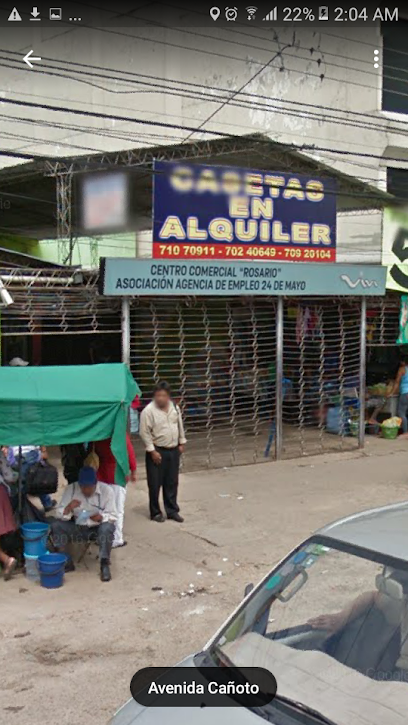
TIENDA DYLAND
Discover the charm of Bolivia at Tienda Dyland, your go-to gift shop for unique souvenirs and local crafts in Santa Cruz de la Sierra.

Tiendas Luci
Discover authentic Bolivian products and immerse yourself in local culture at Tiendas Luci, a vibrant grocery store filled with flavors.

Ropa Boutique
Discover unique styles and traditional Bolivian fashion at Ropa Boutique in El Torno, a must-visit clothing store for every traveler.

Kolob Detalles
Explore Kolob Detalles in Santa Cruz de la Sierra for unique Bolivian gifts and handicrafts that showcase the culture and creativity of Bolivia.
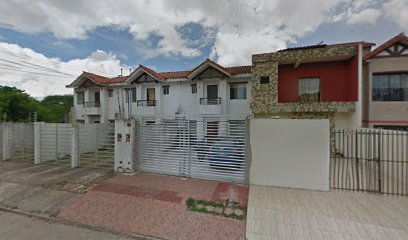
Village
Explore Village Gift Shop for authentic Bolivian crafts and souvenirs in Santa Cruz de la Sierra, a must-visit for every traveler.
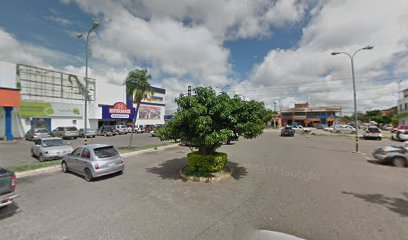
Tienda Charito
Explore the heart of Bolivian craftsmanship at Tienda Charito - your go-to gift shop in Santa Cruz de la Sierra for authentic souvenirs.

Productos americanos
Discover unique American products and local gifts at Productos Americanos, a charming gift shop in Santa Cruz de la Sierra.

Canastones Santa Cruz
Discover the essence of Bolivian culture at Canastones Santa Cruz, where unique gifts and local craftsmanship come together in a vibrant shopping experience.

Essential bars & hidden hideouts
Sir Pieper Resto - Bar
Discover the vibrant culinary scene at Sir Pieper Resto - Bar in Santa Cruz de la Sierra, where delicious grilled dishes meet exceptional service.
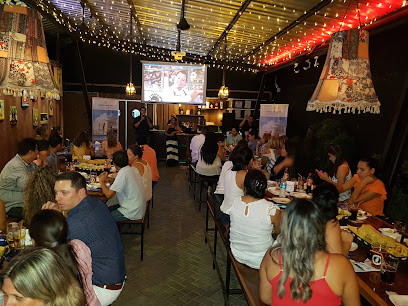
DUDA POP PUB
Discover DUDA POP PUB, a lively bar in Santa Cruz de la Sierra, offering crafted cocktails and an energetic nightlife experience.
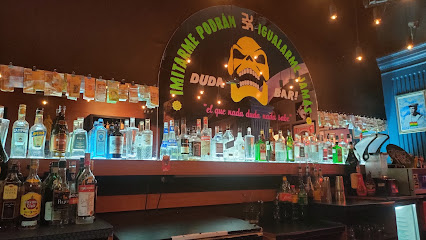
Bar Restaurant El Trapichero
Discover the vibrant flavors of Bolivian cuisine at Bar Restaurant El Trapichero in El Torno - a cozy gastropub perfect for food lovers.

Bar Rokola
Discover the vibrant nightlife of Santa Cruz at Bar Rokola, where affordable drinks and a lively atmosphere await every visitor.

Factory Grill & Bar
Experience the vibrant nightlife at Factory Grill & Bar in Santa Cruz de la Sierra, where delicious food and refreshing drinks await you.
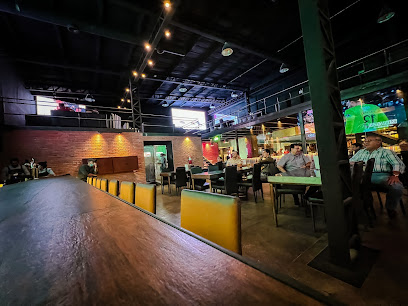
La Terraza - Resto Pub
Discover the vibrant flavors of El Torno at La Terraza, where gourmet dishes and a welcoming atmosphere come together at this charming gastropub.
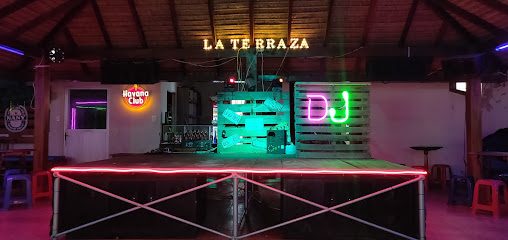
Ruta 9 Sport Bar
Discover the lively Ruta 9 Sport Bar in Santa Cruz de la Sierra - a hub for great drinks, local nightlife, and unforgettable experiences.
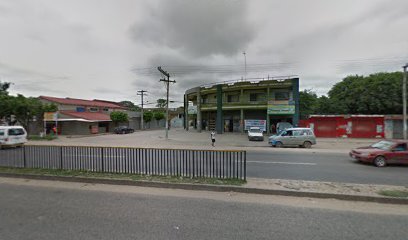
Resto Bar El Gringo
Discover the lively ambiance and exquisite flavors at Resto Bar El Gringo, a top destination for food and drinks in Porongo, Bolivia.

Jenecherú RestoBar
Savor the essence of Bolivian cuisine at Jenecherú RestoBar, a gastropub that blends tradition with modern culinary art in Santa Cruz.

Resto Bar Oasis Pin
Experience the vibrant nightlife and local flavors at Resto Bar Oasis Pin in Porongo, a bar that embodies the spirit of community and relaxation.
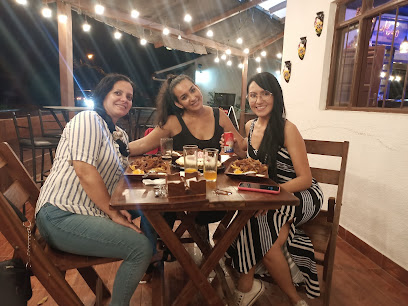
TIKI BAR - Mar Adentro, Urubó
Experience the vibrant atmosphere and refreshing cocktails at Tiki Bar, a tropical oasis in Urubó, Santa Cruz de la Sierra.
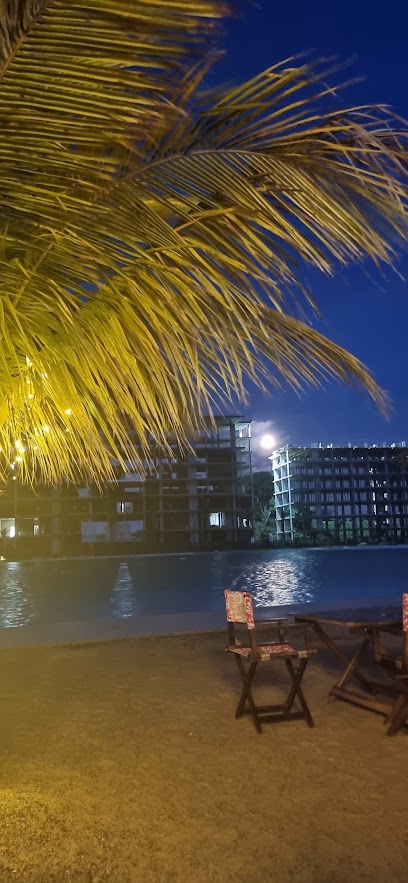
Bar Don Alcides
Experience local flavors and vibrant social life at Bar Don Alcides, a must-visit bar in the heart of the city.
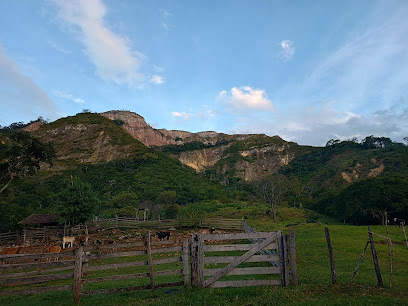
punto A
Discover the vibrant atmosphere and local flavor at Punto A, Bolivia's premier bar for tourists seeking a unique nightlife experience.
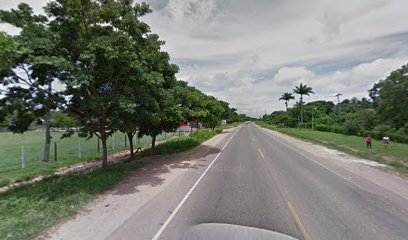
Brayan
Discover Brayan in Santa Cruz: a lively bar offering eclectic drinks and a vibrant atmosphere perfect for enjoying local nightlife.

amboro 2
Discover the vibrant atmosphere and local flavors of Amboro 2, a must-visit bar in Bolivia for tourists seeking an authentic nightlife experience.

Local Phrases about Amboró National Park
-
- Hello¡Hola!
[oh-lah] - Goodbye¡Adiós!
[ah-dyos] - Yes¡Sí!
[see] - No¡No!
[no] - Please/You're welcomePor favor
[pohr fah-vohr] - Thank you¡Gracias!
[grah-syahs] - Excuse me/SorryPerdón
[pehr-dohn] - How are you?¿Cómo estás?
[koh-moh ehs-tahs] - Fine. And you?Bien. ¿Y tú?
[byen. ee too] - Do you speak English?¿Hablas inglés?
[ah-blahs een-glehs] - I don't understandNo entiendo
[noh ehn-tyen-doh]
- Hello¡Hola!
-
- I'd like to see the menu, pleaseMe gustaría ver el menú, por favor
[meh goos-tah-ree-ah vehr ehl meh-noo, pohr fah-vohr] - I don't eat meatNo como carne
[noh koh-moh kahr-neh] - Cheers!¡Salud!
[sah-lood] - I would like to pay, pleaseMe gustaría pagar, por favor
[meh goos-tah-ree-ah pah-gahr, pohr fah-vohr]
- I'd like to see the menu, pleaseMe gustaría ver el menú, por favor
-
- Help!¡Ayuda!
[ah-yoo-dah] - Go away!¡Vete!
[veh-teh] - Call the Police!¡Llama a la policía!
[yah-mah ah lah poh-lee-see-ah] - Call a doctor!¡Llama a un doctor!
[yah-mah ah oon dohk-tohr] - I'm lostEstoy perdido/a
[ehs-toy pehr-dee-doh/dah] - I'm illEstoy enfermo/a
[ehs-toy ehn-fehr-moh/ah]
- Help!¡Ayuda!
-
- I'd like to buy...Me gustaría comprar...
[meh goos-tah-ree-ah kohm-prahr] - I'm just lookingSolo estoy mirando
[soh-loh ehs-toy mee-rahn-doh] - How much is it?¿Cuánto cuesta?
[kwan-toh kwehs-tah] - That's too expensiveEso es demasiado caro
[eh-soh ehs deh-mah-syah-doh kah-roh] - Can you lower the price?¿Puedes bajar el precio?
[pweh-dehs bah-hahr ehl pree-syoh]
- I'd like to buy...Me gustaría comprar...
-
- What time is it?¿Qué hora es?
[keh oh-rah ehs] - It's one o'clockEs la una en punto
[ehs lah oo-nah ehn poon-toh] - Half past (10)Las diez y media
[lahs dyehs ee meh-dee-ah] - MorningMañana
[mah-nyah-nah] - AfternoonTarde
[tahr-deh] - EveningNoche
[noh-cheh] - YesterdayAyer
[ah-yehr] - TodayHoy
[oy] - TomorrowMañana
[mah-nyah-nah] - 1Uno
[oo-noh] - 2Dos
[dohs] - 3Tres
[trehs] - 4Cuatro
[kwah-troh] - 5Cinco
[seen-koh] - 6Seis
[says] - 7Siete
[syeh-teh] - 8Ocho
[oh-choh] - 9Nueve
[nweh-veh] - 10Diez
[dyehs]
- What time is it?¿Qué hora es?
-
- Where's a/the...?¿Dónde está...?
[dohn-deh ehs-tah] - What's the address?¿Cuál es la dirección?
[kwal ehs lah dee-rehk-syon] - Can you show me (on the map)?¿Puedes mostrarme (en el mapa)?
[pweh-dehs mohs-trahr-meh (ehn ehl mah-pah)] - When's the next (bus)?¿Cuándo es el próximo (autobús)?
[kwan-doh ehs ehl prohk-see-moh (ow-toh-boos)] - A ticket (to ....)Un boleto (a ...)
[oon boh-leh-toh (ah ...)]
- Where's a/the...?¿Dónde está...?
History of Amboró National Park
-
Amboró National Park is part of the Eastern Cordillera of the Andes, a region that has been shaped by millions of years of geological activity. The park features a diverse array of landscapes, from rugged mountains to deep valleys and rich alluvial plains. The geological history of the park has contributed to its rich biodiversity, making it one of the most ecologically significant areas in Bolivia.
-
Long before the arrival of the Spanish, the area that is now Amboró National Park was inhabited by various indigenous groups. These early inhabitants left behind a legacy of rock art, pottery, and other archaeological artifacts that provide insight into their way of life. The indigenous people utilized the rich resources of the forest for hunting, fishing, and gathering, and their deep knowledge of the land is still evident in the traditions of their descendants.
-
The arrival of Spanish colonizers in the 16th century drastically altered the lives of the indigenous people. The Spanish sought to exploit the natural resources of the region, including its rich mineral deposits. However, the dense forests and rugged terrain of what is now Amboró National Park made large-scale colonization difficult. The indigenous people were often forced into labor, and many of their communities were disrupted or destroyed.
-
Amboró National Park was officially established in 1973 in an effort to protect its unique ecosystems and biodiversity. The park covers an area of approximately 4,425 square kilometers and is managed by the Bolivian government. The creation of the park was a significant step in conservation, aiming to preserve the habitats of numerous endangered species and maintain ecological balance.
-
Over the years, various conservation efforts have been implemented to protect Amboró National Park from threats such as illegal logging, mining, and poaching. Non-governmental organizations and local communities have played a crucial role in these efforts. However, challenges remain, including balancing the needs of local populations with conservation goals and mitigating the impacts of climate change on the park's ecosystems.
-
Amboró National Park is not only a natural treasure but also a cultural one. The park is home to several indigenous communities that have lived in harmony with the land for generations. These communities have a deep spiritual connection to the forest, which is reflected in their customs, rituals, and folklore. Visiting the park offers a unique opportunity to learn about these cultures and their enduring relationship with nature.
Amboró National Park Essentials
-
Amboró National Park is located in central Bolivia, near the city of Santa Cruz de la Sierra. The nearest international airport is Viru Viru International Airport (VVI) in Santa Cruz. From Santa Cruz, you can take a bus or hire a private vehicle to reach the park. The journey usually takes about 3 to 4 hours by road, depending on the specific entrance you are aiming for (e.g., Buena Vista or Samaipata). It is recommended to book transportation in advance, especially during the peak tourist season.
-
Within Amboró National Park, transportation options are limited due to the rugged terrain. Most visitors rely on guided tours that provide transportation within the park. If you prefer to explore independently, renting a 4x4 vehicle is advisable. Local buses and shared taxis (trufis) are available from Santa Cruz to nearby towns such as Buena Vista and Samaipata, but they do not enter the park itself. Hiking and horseback riding are popular ways to explore the park's interior.
-
The official currency in Bolivia is the Boliviano (BOB). While credit cards are accepted in some hotels and restaurants in Santa Cruz, it is advisable to carry cash when visiting Amboró National Park, especially for entrance fees, guided tours, and small purchases. ATMs are available in Santa Cruz and nearby towns, but it is wise to withdraw sufficient cash before heading into the park.
-
Amboró National Park is generally safe for tourists, but it is important to take standard precautions. Avoid walking alone at night in unfamiliar areas and keep an eye on your belongings. Some parts of Santa Cruz have higher crime rates, particularly in the city center and certain neighborhoods. Always stay vigilant and aware of your surroundings. Within the park, follow your guide's instructions and stay on marked trails to avoid getting lost or encountering wildlife unexpectedly.
-
In case of emergency, dial 110 for police assistance or 118 for medical emergencies. It is highly recommended to have travel insurance that covers medical emergencies and evacuation. The nearest medical facilities are located in Santa Cruz, but there are basic medical services available in Buena Vista and Samaipata. For minor health issues, there are pharmacies in these towns where you can purchase over-the-counter medications.
-
Fashion: Do wear lightweight, breathable clothing suitable for the tropical climate. Don't forget sturdy hiking boots and insect repellent. Religion: Do respect local customs and traditions, especially when visiting nearby towns with religious sites. Public Transport: Do be respectful and patient when using local buses and shared taxis. Don't expect punctuality, as schedules can be flexible. Greetings: Do greet people with a handshake or a friendly 'Hola'. Don't be overly formal. Eating & Drinking: Do try local dishes and drink bottled or purified water. Don't drink tap water.
-
To experience Amboró National Park like a local, engage with local guides who have in-depth knowledge of the area's flora and fauna. Visit the nearby towns of Buena Vista and Samaipata to sample local cuisine and shop for artisanal crafts. Join a guided night hike to experience the park's nocturnal wildlife. Don't miss the opportunity to see the park's diverse bird species; bring binoculars for birdwatching. Lastly, consider staying in eco-lodges to support sustainable tourism practices.
Nearby Cities to Amboró National Park
-
Things To Do in Sucre
-
Things To Do in Cochabamba
-
Things To Do in Potosi
-
Things To Do in Tarija
-
Things To Do in Uyuni
-
Things To Do in La Paz
-
Things To Do in Copacabana
-
Things To Do in Tacna
-
Things To Do in Arica
-
Things To Do in Puno
-
Things To Do in Iquique
-
Things To Do in San Pedro de Atacama
-
Things To Do in Salta
-
Things To Do in Arequipa
-
Things To Do in Antofagasta

